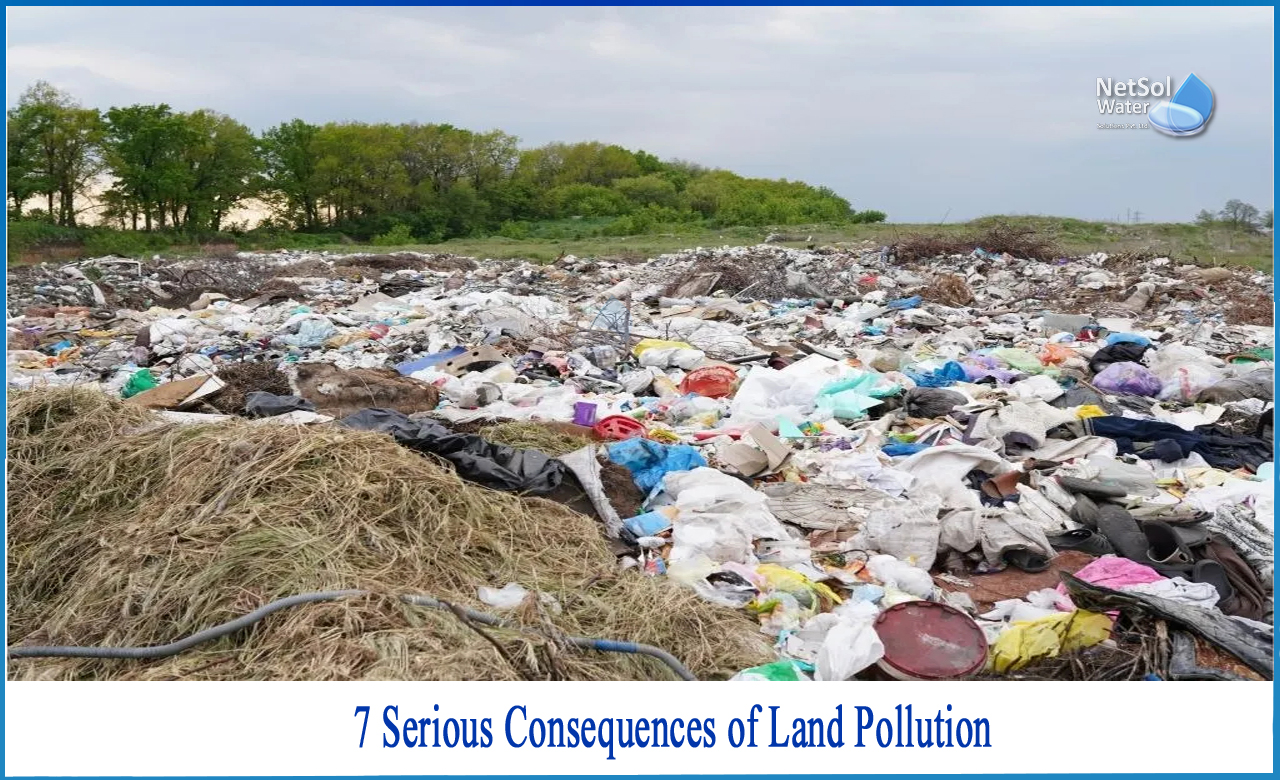What are the consequences of land pollution?
Land pollution has disastrous implications, particularly for the survival of animals and humans, as well as the quality of soil and water. Environmental protection authorities warn that if waste in landfills is not divided into reusable, recyclable, and organic waste, the consequences could be substantially worse. Land contamination has a variety of long-term consequences.
The following are the most significant implications of land pollution:
1. Human Health Effects
Many parts of the world, particularly in underdeveloped countries and slum areas, have massive amounts of rubbish and pitiful waste collection services. Others have suitable garbage collecting procedures in place, yet they wind up in landfills due to a lack of regulation.Hazardous chemicals, insecticides, and metals can be found in these wastes, all of which are harmful to humans. Plastic garbage, for example, could contain chemicals like acrylic, polyvinyl chloride, polycarbonate, and phthalates, which have been linked to cancer, skin ailments, respiratory problems, and birth defects in pregnant women.
Chemical components contained in pharmaceutical, pesticide, and fertiliser industrial wastes, such as cadmium, asbestos, mercury, cyanide, arsenic, and chromium, have severe impacts on human health. They include cancer-causing substances and can also cause lung, kidney, and liver damage.
2. An increase in the number of landfills
When land becomes contaminated with solid agricultural and industrial waste, the number of dump sites in the city increases. Landfills can serve as breeding grounds for disease-carrying mice, rats, insects, and birds. These dumps are loaded with harmful compounds that can enter the human body through vegetables and foods cultivated on polluted soils. They can also leak into consumer-use water sources or be breathed by humans through polluted dust.
3. Pollution of the soil
Soil pollution is classified as a type of land pollution. As a result, when fertiliser chemicals are overused or lands are deteriorated due to chemical and solid waste disposal, the top layer of the soil is harmed, resulting in soil contamination. The main land pollution components that cause soil pollution are agricultural, healthcare, and chemical wastes.
4. Pollution of the Air
Landfills emit foul odours and stenches in various locations where they are located. Residents in cities and towns near large dump sites and landfill areas have reportedexcessive levels of noxious odour. Aside from the disgusting odour, landfills are constantly burning, thus are contributing to air pollution.
5. Pollution of Water
Land contamination has the potential to spread in all directions, causing harm to the immediate ecosystem. It can contaminate water and drastically impair its quality on this basis. It occurs when surface rainwater runoff carries chemicals and other harmful substances from landfills and solid wastes into rivers.
Leaching occurs thus allowing harmful metals and compounds to penetrate in aquifers and water tables. Furthermore, contaminated water evaporates and condenses as precipitation with the contaminants, perpetuating the pollution and contamination cycle.
6. Degradation of the Environment
When it comes to environmental damage, deforestation is the most pressing worry. Ecosystems and habitats are destroyed as a result of it. Deforestation is the removal of vegetation and tree cover, resulting in harsh environmental conditions such as strong sun heat and disruption of the rain cycle.
Various atmospheric imbalances, such as the greenhouse effect, climate change, and global warming, occur when the atmospheric balance is disrupted. Increased stormwater runoff and leaching are also a result of deforestation. Deforestation has the economic effect of robbing communities of tourism revenue.
7. Wildlife Impact
Wildlife creatures have suffered greatly in recent decades as a result of a continual threat to their natural habitat and surroundings. Human commercial activities on land have gradually damaged and ruined the environment, forcing wildlife to migrate further away and adapt to new environments. As a result, some species have died while attempting to adapt, some have become extinct, and others are on the cusp of becoming extinct.
8. Tourism Industry Impact
Landfills and strewn waste sites within cities generally create a negative picture of the population and the city's governance. It could just be a measure of insensitivity to the environment. Landfills and garbage sites also degrade air quality and may pose a health risk to humans. As a result, it may cause a city to lose its tourist appeal, resulting in a loss of tourism revenue for the government.
Conclusion
Man has witnessed the adverse effects of land pollution since very long and is now trying to reverse them by bringing changes from the ground level. It should be one’s prime responsibility to help nature restoration since we are the culprits.
Netsol Water is Greater Noida-based leading water & wastewater treatment plant manufacturer. We are industry's most demanding company based on client review and work quality. We are known as best commercial RO plant manufacturers, industrial RO plant manufacturer, sewage treatment plant manufacturer, Water Softener Plant Manufacturers and effluent treatment plant manufacturers. Apart from this 24x7 customer support is our USP. Call on +91-9650608473, or write us at enquiry@netsolwater.com for any support, inquiry or product-purchase related query.



